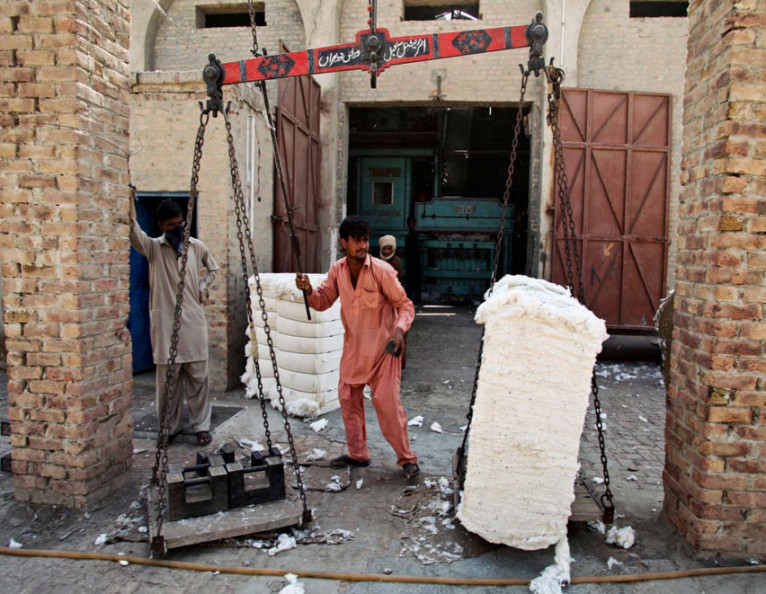Raw cotton production in Pakistan is witnessing its worst bout in recent memory. According to a report published in this newspaper, the country is set to miss the cotton sowing target by 8 percent during the current fiscal year, based on preliminary figures submitted to Senate Standing Committee on National Food Security.
But decline in domestic cotton production is no news: the inflection point came in FY17, when area under cultivation declined by 14 percent based on commensurate percentage downswing in local consumption during the previous year. Pakistan’s raw cotton exports also went on a downward spiral during the same period, reduced to USD 40 million in value terms, for the first time since FY04.
Ever since, raw cotton demand and production has failed to recover its lost momentum. Between FY10-FY16, average area under cotton cultivation stood at 2.9 million hectares (excluding the flood year of FY11). While some recovery was noted as cultivated area climbed back to a little under 2.7 million hectares in last fiscal year, provisional reports suggest that no growth may be seen during ongoing year. As yield is expected to remain unchanged as well, Pakistan may see a production shortfall of at least 25 percent, against projected demand of 2.2 million metric tons.
So, what explains the depressing trend in cotton production? Officials point to decreased availability of water during Kharif season. While the explanation sits well with the “water scarcity” bandwagon, actual surface water available increased by 6 million-acre feet during FY17’s cotton sowing season, and showed no significant decline in the following year either.
Then, an effort is made to build a correlation between increased sugarcane productions at the expense of cotton cultivation. There is little doubt that the country is producing excess sugarcane as white sugar production has exceeded domestic demand by more than 1.5 million tons during last two years as per industry’s own data. However, the correlation doesn’t stand as area under sugarcane cultivation has, at best, witnessed erratic behaviour during past 5 years: area cultivated actually declined, albeit marginally, in 3 out of last 5 years; whereas yield per hectare has inched forward almost one percentage point per annum.
Increased sugarcane production also negates the water shortage theory as both sugarcane and cotton are Kharif crops, and cane is universally accepted to be much more water intensive than cotton when compared in terms of their dollar value. If there is a shortage of water, how is sugarcane cultivation being sustained at historically high levels?
Like most things in life, cotton’s poor trend may have no one explanation, and may be a result of a confluence of adverse factors. One garments exporter privately suggests that this may be a blessing in disguise. The period between FY14 – FY17 saw USD-PKR rate flatline in the PKR 100 – 105 band, the same time when Pakistan was awarded the GSP+ status.
In his view, as prospective benefit under GSP+ scheme was undermined due to overvalued rupee, exporters felt pressured to improve and invest in product quality. On the other hand, undervalued dollar allowed them to import better quality cotton, reflected in net cotton import bill which ballooned 2.5 times in FY16.
However, the days of overvalued rupees are now behind us. While exporters may see their top-line shoot up thanks to dollar bonhomie, the value-added sector relying on higher quality imported cotton may begin to suffer as their raw material cost will balloon. Time to start thinking less in rudimentary terms such as cultivated area and yield; and more in terms of crop quality.


